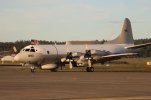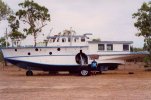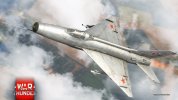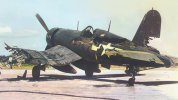-
Please take a moment and update your account profile. If you have an updated account profile with basic information on why you are on Air Warriors it will help other people respond to your posts. How do you update your profile you ask?
Go here:
Edit Account Details and Profile
You are using an out of date browser. It may not display this or other websites correctly.
You should upgrade or use an alternative browser.
You should upgrade or use an alternative browser.
The Great, Constantly Changing Picture Gallery, Troisième partie: la vengeance!
- Thread starter SynixMan
- Start date
Will this job be assumed by VUP squadrons?VQ-1 has retired its last EP-3E. The squadron has just a P-3C left for training and support and that is not long for this world. The end of many decades of service. VQ-1 itself will be gone by the end of March.
View attachment 41898
That is the stated intent.Will this job be assumed by VUP squadrons?
VQ-1 has retired its last EP-3E. The squadron has just a P-3C left for training and support and that is not long for this world. The end of many decades of service. VQ-1 itself will be gone by the end of March.
View attachment 41898
No shit......you leave NUW for a few weeks for airline duty and this is what they come up with?
I wish I'd been around. No particular connection to the plane, but I guess sort of via my dad, who would have been sad to see prop planes stop flying at whidbey. Don't know how many times I pointed to that one spot that perpetually always had one stacked next to the main road, and told my boys "that's the spy plane"
The USAF bought just over 500 RF-4C recon Phantoms which entered service starting in 1964 -- just in time for the Vietnam War. I don't know the statistics, but I'm sure plenty were lost in that conflict. The RF-4C is often described as unarmed, which was mostly true, but the aircraft had a secondary mission of nuclear strike with a single B28 bomb on the centerline.
The Marines took advantage of all that Air Force development money to buy 46 RF-4Bs. After the Navy RF-8G photo Crusaders were gone, Marine dets operated from Midway and Coral Sea for a few years.
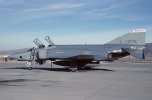
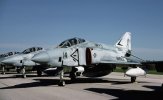
The Marines took advantage of all that Air Force development money to buy 46 RF-4Bs. After the Navy RF-8G photo Crusaders were gone, Marine dets operated from Midway and Coral Sea for a few years.


The Soviet counterpart to the Lockheed U-2: The Myasishchev M-17 and M-55. Built in very small numbers (fewer than 10) and originally intended not for reconnaissance but to counter the CIA high-altitude camera-equipped balloons that were carried across the Soviet Union by prevailing winds. The original model had twin 23mm cannon in a dorsal turret and could carry air-to-air missiles as well.
The prototype took off on its maiden flight in December 1978 and promptly crashed in low visibility conditions. The "production" version was designated the M-17 (NATO Mystic) and perhaps as few as two were built. By the time the aircraft was ready, the balloon threat had long ceased; the CIA had other means of photographing the interior of the USSR. The M-17 was used to set a number of altitude (around 70,000 feet) records in 1990. (Note the gun turret in the photo.)
The single engine M-17 was succeeded by the enlarged and twin-engine M-55 (NATO Mystic B) which first flew in 1988. About five of these, dubbed Mystic B by NATO, were built and included a single two-seat training version. The M-55 engaged in research roles in the 1990s and set a number of altitude records in the 20,000-25,000 kg weight class (again, approximately 70,000 feet). None of these fly today.
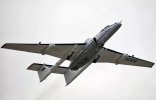
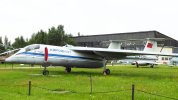
The prototype took off on its maiden flight in December 1978 and promptly crashed in low visibility conditions. The "production" version was designated the M-17 (NATO Mystic) and perhaps as few as two were built. By the time the aircraft was ready, the balloon threat had long ceased; the CIA had other means of photographing the interior of the USSR. The M-17 was used to set a number of altitude (around 70,000 feet) records in 1990. (Note the gun turret in the photo.)
The single engine M-17 was succeeded by the enlarged and twin-engine M-55 (NATO Mystic B) which first flew in 1988. About five of these, dubbed Mystic B by NATO, were built and included a single two-seat training version. The M-55 engaged in research roles in the 1990s and set a number of altitude records in the 20,000-25,000 kg weight class (again, approximately 70,000 feet). None of these fly today.


Got a spare Consolidated PBY-5A seaplane sitting around and trying to think of something to do with it? How about making it into a houseboat?
View attachment 42037View attachment 42038

After a combat mission over Kyushu, Japan, in June of 1945 this F4U Corsair managed to successfully return!
View attachment 42171
Pretty sure that's an FG-1D. Three bladed prop and vertical tail shape, and how the fuselage and the aft part of the canopy are shaped.
But there isn't much left of it for sure!
I'm not sure I'm convinced that this is an FG-1D. After reading this article, the FG-1D aircraft were exact reproductions of F4U.Pretty sure that's an FG-1D. Three bladed prop and vertical tail shape, and how the fuselage and the aft part of the canopy are shaped.
But there isn't much left of it for sure!
The 'F4U' designation was for Vought-built Corsairs. The 'FG-1' designation was for Goodyear built Corsairs. There were no differences in the aircraft, just in where they were built. The F4U Corsair and the Hellcat had the same 2800 Double Wasp engine, yet the Corsair was at least 40 mph faster.
The Corsair initially had a three-blade propeller, but later models switched to a four-blade propeller for better performance. The four-blade propeller increased the thrust and reduced the torque effect of the engine. It also reduced the vibration and noise of the propeller.
Google Image search revealed this:Pretty sure that's an FG-1D. Three bladed prop and vertical tail shape, and how the fuselage and the aft part of the canopy are shaped.
But there isn't much left of it for sure!
2nd Lt Alson Frazer’s FG-1D Corsair after an engagement with N1K2-J Shiden-Kais of the 343rd. Frazer miraculously managed to nurse his crippled Corsair back to base.
It is a combat damage, it happened on June 22nd, 1945 in engagement over Amami Oshima where about 20 Corsairs from VMF-113, led by Major Orvin H. Ramlo carried a standard CAP barrier preventing any aircraft from flying to Okinawa. Among them was 2nd Lt. Alson C. Frazer flying a top cover in his FG-1D. VFM-113 was engaged by a group of less than 30 Shiden-Kais from 343rd Kokutai under command of Lt. Oshibuchi.
Section in which was Alton Frazer got attacked form above by 7 N1K2-Js of 301st Squadron, during combat Corsair division broke into 1 vs 1 or 2 vs 1 dogfights. Frazer tried to rejoin his leader 1/Lt Johnson, but suddenly a George came into view on his right, flying to the left and Frazer managed to score a victory with a carefully led deflection shot. George canopy shattered and a large chunk of metal flew off the right wing root. Most likely Frazer hit Lt Keijiro Hayashi aircraft who was leading Japanese 1st division of the 2nd Chutai. Hayashi disengaged and hid in clouds, but as the aircraft was trailing a white smoke and way to Kyushu was long he never made it and was posted missing.
Here is how Frazer recalls the moment after scoring hits, when he realized that someone also got him in his sights:
"I began to notice that my left wing was disintegrating. I heard no shots, I heard no gunfire. But became visually aware that my left wing was coming apart. So I realized that i had been hit, so I broke off my left turn and rolled out and pitched over and commenced to dive. I remember being quite frightened. My adrenaline was undoubtedly very high but my mental capacities were good. I just felt that I've been hit, OK, he won, I lost, now let's go home!"
Frazer was briefly followed by a Shiden-Kai which kept shooting, but eventually in clouds disengaged. Frazer left the dogfight and landed safely in his damaged machine.
But not everyone was so lucky that day as 343rd Kokutai returned to its home missing four pilots (Lt Keijiro Hayashi, CPOs Sueo Ishizue and Takashi Yanagisawa and PO 1/c Susumu Tsuchiya) while VMF-113 lost 2 pilots and 2 machines with three other damaged.
Unit's post action report was following:
"The enemy planes and pilots engaged were by no means of the type usually encountered. Their planes were good and the pilots skilled and aggressive. A very good formation was flown and maintained. Deception was used by sending in one division as decoy. The planes waiting above were grouped in four-plane divisions, sections roughly abreast, and divisions stacked. They attacked by divisions in the following manner: The whole division executed a chandelle to the left, thus starting a diving approach on opposite course with altitude advantage. The division then split into two sections, one going to each side of the target planes and executed high side runs simultaneously, completing the run by tailing in and joining."
Following day marked also end of organized resistance on Okinawa.
Source: Genda's Blade by Henry Sakaida and Koji Takaki, pages 135-139.
I spent some considerable time with the nerds of the Fighter Factory at the Military Aviation Museum. There is a section of my brain dedicated to the weird nuances of WW1 and WW2 airplanes.Google Image search revealed this:

